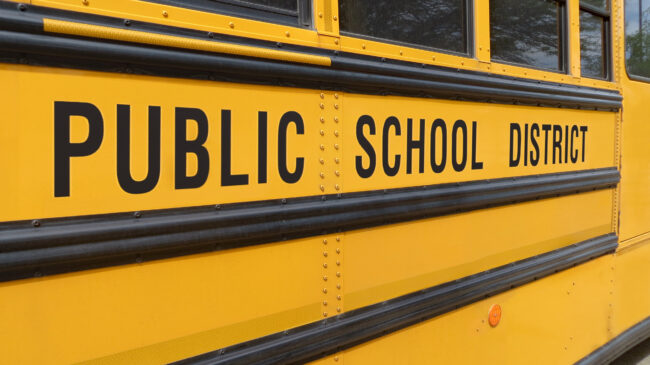Nearly a year into the COVID-19 crisis, communities across the country are challenging long-held assumptions about public education, including the role of district boundaries in shaping everything from funding to educational opportunities. In an era of increasing customization and technological resources — and in a moment where students log on to classes remotely and parents are disagreeing on school reopening strategies — the absurdity of assigning kids to schools based on arbitrary and often unfair lines is more apparent than ever.
Lawmakers in various states — including Oklahoma, South Carolina and Texas — have taken notice and are prioritizing legislation that would allow students to more easily transfer to schools outside of their residentially-assigned districts, which is commonly referred to as open enrollment.
Open enrollment is the least talked about form of school choice, perhaps because of an underlying — and mistaken — assumption that public schools are already open to all comers. The reality is that despite the growth of choice policies such as charter schools and tax credit scholarships, public education is still tethered to real estate. Families who aren’t satisfied with their school district are often prohibited or discouraged from transferring to neighboring districts, with research indicating that factors other than available space, such as student demographics, affect district decisions on whether to allow transfers.
This is unfortunate because research also suggests that families benefit from open enrollment opportunities. A forthcoming analysis of student transfers in Texas by Reason Foundation finds that students tend to leave lower-performing districts — and stay at higher-performing districts — at greater rates. Overall, nearly 45,000 students transfer into higher-performing districts as measured by state accountability grades, which is consistent with trends from other states including Colorado, Florida and Minnesota.
But the analysis also raises important questions that policymakers in Texas and other states aren’t equipped to answer.
For example, what exactly are the transfer policies of Texas’s 1,200 school districts? It’s unclear why some districts — such as Grand Prairie and Deer Park ISD — enroll thousands of students from outside their boundaries while others, including the affluent Highland Park ISD, don’t take any at all. This could be for legitimate reasons, such as capacity constraints, but stakeholders are left to wonder. Similarly, little is also known about the demographics of transfer students or why they’re seeking additional opportunities in the first place.
The problem is that most states’ policy frameworks are underdeveloped and outdated. At a basic level, states rarely publish data on student transfers and generally don’t require districts to report their policies. As a result, policymakers lack the information needed to guide sound decisions — most don’t even know how many transfers take place within a state — and parents are often unaware of their options or have difficulty navigating complex processes.
But the problem reaches further than a lack of transparency since some laws explicitly erect roadblocks for families seeking a change. For example, districts in Texas and Arizona have restrictions preventing transfer students from accessing transportation while some parents in South Carolina and California must obtain releases from their resident district before enrolling in another district. Not to mention the fact that parents in states such as Tennessee are sometimes charged tuition, which not every family can afford.
State open enrollment policies are in dire need of modernization — and the good news is that there’s momentum to do just that.
In Arizona, lawmakers introduced a pair of bills aimed at strengthening support for families. Senate Bill (SB) 1685 would streamline application processes while SB 1683 paves the way for some families to get direct transportation grants in cases where bus routes don’t serve them. Similarly, legislation in South Carolina would shine light on how many open seats districts have available while SB 783 in Oklahoma ensures that districts can no longer reject transfer students for no reason at all.
In past decades, education policies were designed around the needs of school districts, but it’s clear that they must now adapt to better serve families. For policymakers, this means rethinking the role of district boundaries and there’s low-hanging fruit with how they approach an underutilized form of school choice.
A version of this column previously appeared at The Hill.


